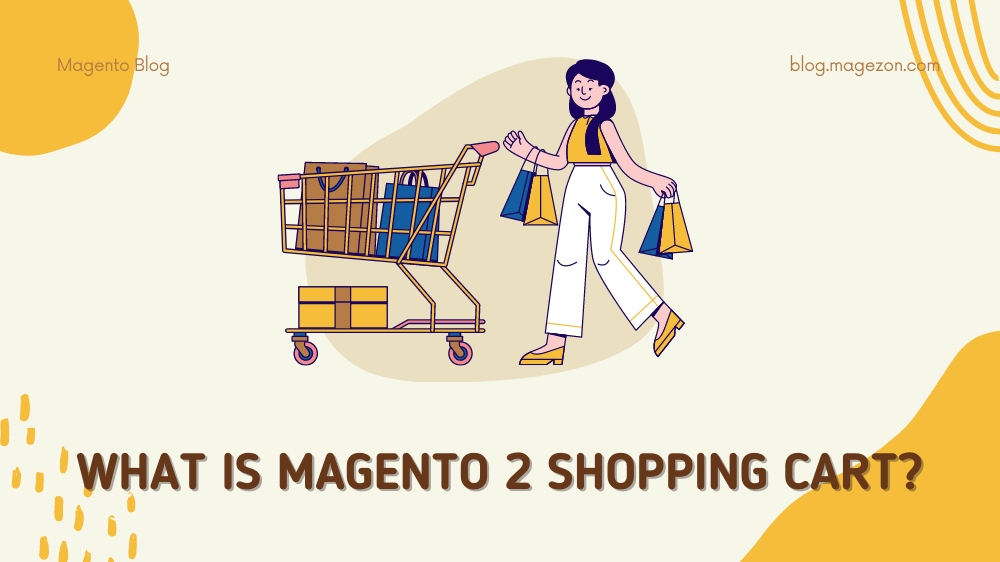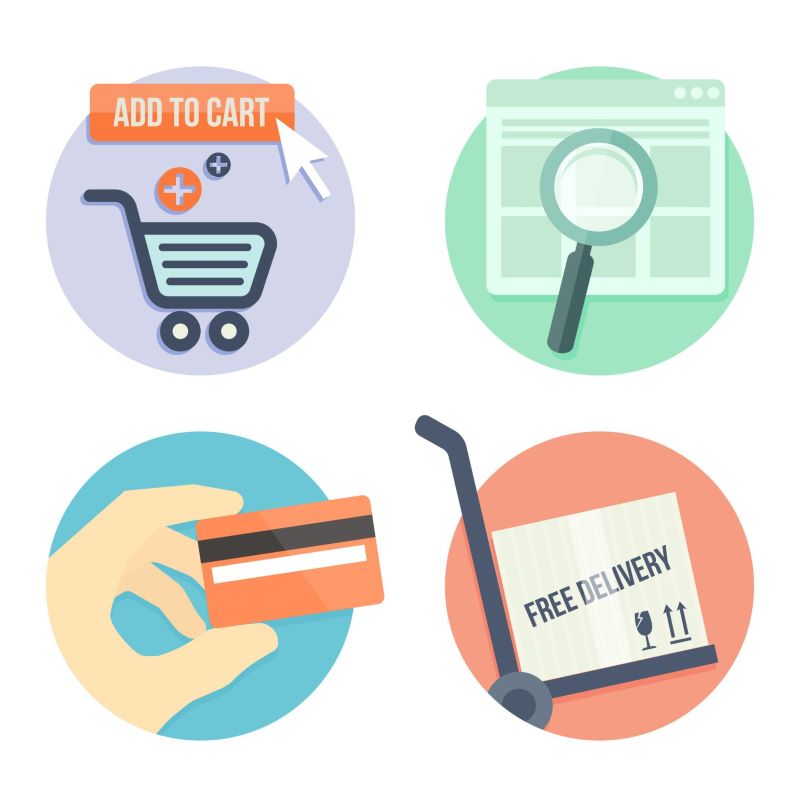
If you are an online shopper, you must have used an online shopping cart – the software that aids in your online purchasing process. Or, if you’re establishing an online business from scratch and want a more straightforward method to get your online store up and running, you can use an e-commerce platform that includes a shopping cart. Magento 2 shopping cart – software that is added to existing websites – is an example.
According to a Statista survey, 88.05 percent of internet shopping orders did not result in a purchase. As a result, businesses are paying greater attention to the shopping basket – the stage between potential and actual buyers.
What is the basic information regarding the Magento 2 shopping cart that every business should be aware of? This article will give a thorough definition and report on its responsibilities in businesses and how Magento carts function in online retailers.
Table of contents
What is an e-commerce shopping cart in general and in Magento 2?

On an online retailer’s website, a shopping cart is a software that makes purchasing a product or service more accessible. It receives the customer’s payment and arranges the information to be distributed to the merchant, payment processor, and other stakeholders.
Customers may pick products, evaluate what they purchased, make modifications, add new items as required, and then buy the items using an eCommerce shopping cart.
The website shopping cart page is the central hub from which the purchase is completed. Fortunately, Magento 2 is built to provide your clients with a complete purchasing experience. Each consumer on your website, for example, may see their purchasing cart. A store administrator can also make changes to products that have already been submitted as orders. Shoppers add items to their shopping carts on the front end. These items can be purchased, deleted, or customized in some cases. From the customer’s perspective, everything is relatively simple.
The shopping cart Magento page is a critical step in the purchase process for customers. They’ll decide whether shoppers go to the checkout procedure or return and leave their shopping basket.
| With Magento 2 Ajax Cart Pro Extension, your customers are able to continue shopping without waiting for pages to reload each time adding items to cart or removing items from the cart. It not only improves customer experience but also helps to avoid abandoned carts. |
How an online shopping cart works in Magento 2

As an e – retailer, you should be familiar with how shopping carts function, their features, and the benefits that come with them. There is a generic method in which shopping carts function, regardless of the sort of shopping cart you use. We’ve made it easy for you by providing a step-by-step explanation to demonstrate how various online carts function.
1. Adding items to the shopping cart
Consider a case in which customers are exploring the website in search of their favorite items or services. The first stage in converting a visitor into a possible purchase is to complete this mission. Using the ‘Add to basket’ button on every product page, customers may rapidly choose goods for further investigation.
2. The cart’s processing
Integrating a user-friendly Magento 2 shopping cart onto a website is critical for clients to determine whether or not they require that specific product. In addition, the easier it is to make changes to the shopping cart, the more likely customers will finish the transaction by completing the needed payment.
The alteration capabilities must primarily cover adding new items, removing selected products, changing the number of products, changing the materials, choosing the size of the products, and so on. Customers should be able to complete all of these tasks with a few mouse clicks. In the basket, the entire value of the goods, even after adjustments, is automatically computed to assist consumers in shopping within their budgets. When clients click the Checkout button, they are sent to the next stage of the purchase process.
3. Purchasing
Customers must now input their payment information, such as their name, address, credit card number, phone number, and so on. However, it is critical to remember that the amount of data provided should not be excessive since this might lead to consumer frustration and displeasure.
This is also the moment at which cart abandonment rates might rise. If you don’t want customers to abandon your site soon, make the checkout experience as simple as possible by incorporating features such as automated address recommendations, and several delivery alternatives, multiple payment methods.
Customers frequently double-check their order data after pressing the ‘Submit/Complete order’ button to ensure no mistakes. If there are no problems, your shop has successfully turned a “tourist” into a “purchaser.”
4. Additional buying
The role of Magento 2 shopping cart does not cease when a visitor is successfully converted into a customer. Every online vendor will want to keep their existing clients by incentivizing them to buy more even after making a transaction.
As a result, offering clients with a Continue Shopping option and some automatic suggestions to substitute or complement their product selection is critical. Then, customers will not have to leave their shopping carts to add additional products to their Orders. Moreover, many large online retailers believe that up-selling and cross-selling are excellent ways to engage their clients.
5. Updates the shopping cart in the final moment
Online buyers are frequently suspicious about the things they have chosen and want to purchase. It’s very typical for internet buyers to make last-minute alterations to their orders. As an online vendor, you must ensure that they make such adjustments in their shopping carts. Allow them to effortlessly delete or add things, as well as make any changes they want to their shopping cart, even at the last minute.
Types of online shopping carts

1. Pre-built online shopping carts
These shopping carts are often Software As A Service (SAAS) solutions, with capabilities that may be accessed by subscribing to a monthly or annual subscription. It is a ready-made shopping cart that allows an online merchant to create, host, and administer their online business. The Builderfly Ecommerce Platform is one of the most outstanding example of such a cart.
2. Created-to-order internet shopping carts
This type of web cart is, as the name implies, custom-designed or customized. Therefore, the online business may customize the functionality available in the Magento shopping carts.
3. Open source online shopping cart
An open-source cart is comparable to a pre-built cart, but you can quickly modify it because you access the source code. You may then layer your code on top of the one currently in the cart or update it as needed.
Benefits of eCommerce shopping carts
Shopping carts affect how the checkout process appears and how easy it is for customers to use, in addition to enabling online transactions. Urban Bikes Direct‘s chief marketing officer, Jonathan Frey, said:
“Sure, shopping cart software takes customers through the checkout process from the moment they click on the cart icon all the way to payment. But it’s also the engine behind pretty much every part of the customer experience that distinguishes online stores from other websites.”
According to Frey, shopping carts handle the hard work of producing product photos and information on every single page.
Here are three more things you can do with an online shopping basket.

1. Increase the number of new and recurring customers
Online shopping is made possible by shopping cart software, which may help you gain new clients who might otherwise miss out on your items if you just sell from a physical location. In addition, customers will be more likely to buy from you again if they see how simple it is to buy your items online and if they find them to be worthwhile. According to Yotpo, an e-commerce marketing platform, 14.77 percent of all e-commerce clients are repeat customers who spend three times as much as first-time customers.
2. Accept a variety of payment methods
Many physical shops are still using old-fashioned payment processing equipment. Not every business can take PayPal, Apple Pay, or Amazon Pay, for example. However, you can accept these payment methods using shopping cart software.
This is significant since the number of individuals who utilize these payment methods has risen considerably in the last few years. According to Statista, Apple Pay had 441 million users in September 2019. Moreover, Apple Pay was activated by 48 percent of iPhone users, according to the report.
These extra payment processing options provide customers with more options for how they pay. In addition, online shops can attract buyers to buy more since they offer quick, simple, and easy online checkout.
Read more: 15+ Best Magento 2 Payment Gateways For Your Store
3. Re-engage potential customers
It’s commonplace for individuals to go to a website, add some goods to their shopping cart, and then leave without purchasing anything. Consumers leave shopping carts for a variety of reasons, including the following:
- The website or webpage takes a long time to load.
- The checkout procedure is either lengthy or perplexing.
- They become distracted or busy.
- They are dissatisfied with the product cost.
Combining digital marketing with your website’s shopping cart helps re-engage prospects who started shopping on your website but did not complete a purchase. Remarketing via Google Ads, Facebook advertising is used to re-engage customers. Customers will remember your brand if it keeps appearing on their social media sites.
Wrapping Up
In today’s world of online shopping, everyone is familiar with the shopping cart feature seen on numerous eCommerce websites on the Internet. These websites use the shopping cart concept to enhance the customer experience and maximize their profits.
Understanding the Magento 2 shopping cart is essential for supporting eCommerce shops in getting these benefits, raising conversion rates, enhancing sales effectiveness, and avoiding abandoned carts to the greatest extent feasible. Without question, if implemented correctly, an online shop cart can be quite advantageous to businesses.
We hope that this post has given you some valuable information regarding this eCommerce feature.

Optimize Your Magento Store With Powerful Extensions
Looking for fast, efficient and well-coded extensions to build or optimize your Magento stores for sales boosting? Then visit Magezon website and grab necessary add-ons for yours today!
 Magezon Blog Help Merchants Build Comprehensive eCommerce Websites
Magezon Blog Help Merchants Build Comprehensive eCommerce Websites

